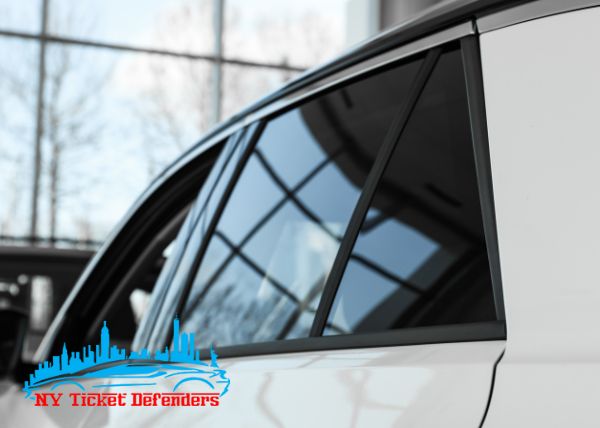Auto Window Tinting: Lasting Security for Your Auto's Windows
Auto Window Tinting: Lasting Security for Your Auto's Windows
Blog Article
Window Tinting Laws and Standards: What You Need to Know Before Tinting Your Cars And Truck
Prior to waging home window tinting for your automobile, it is important to acquaint on your own with the varied legislations and standards that regulate this method across different states. These regulations determine the allowable degrees of color darkness, often gauged by visible light transmission (VLT) percents, and consist of certain stipulations for front windshields targeted at making sure road security. In addition, certain jurisdictions might provide clinical exemptions for people with certifying conditions. Understanding these intricacies can save you from prospective legal ramifications, but what are the details policies in your state?
Introduction of Home Window Tinting Laws
Home window tinting legislations are regularly subject to variation throughout different territories, showing regional laws and safety and security considerations. These legislations dictate the permissible degrees of color darkness and reflectiveness on vehicle home windows, making certain that vehicle drivers maintain adequate exposure while likewise shielding versus unsafe UV rays and warmth.
Most laws identify window tinting based on the Visible Light Transmission (VLT) percentage, which shows the quantity of light that can pass with the window. Generally, reduced VLT portions indicate darker tints. Regulations usually separate between the front, side, and rear windows, with more stringent restrictions applied to the front windshield to enhance security for both the vehicle driver and other roadway individuals.
Furthermore, some territories enforce limitations on the reflectivity of the tint, protecting against extreme glow that could impair visibility. Exceptions to these legislations may exist for individuals with details medical problems needing added sunlight protection. Compliance with home window tinting regulations is essential, as violations can lead to fines, obligatory removal of the tint, and prospective boosts in insurance policy costs. It is necessary for car owners to familiarize themselves with regional laws prior to proceeding with home window tinting setups.
State-by-State Color Regulations
Recognizing the particular window tinting policies in each state is vital for car proprietors looking for to follow the law. Each state in the united state has established its very own collection of policies regulating home window tinting, which can differ significantly. These regulations frequently dictate the permitted levels of tint darkness, the kinds of home windows that can be tinted, and any medical exceptions that may use.
For example, states like California have strict constraints on color darkness for front windows, while others, such as New Mexico, may allow darker tints. Additionally, certain states mandate certain exposure percents for numerous windows, consisting of the windshield, front side home windows, and back windows. It is essential for automobile proprietors to acquaint themselves with their state's laws to stay clear of possible penalties or fines.
Moreover, some states may call for a qualification sticker label to be put on colored windows, indicating compliance with state laws. Failure to comply with these guidelines not just risks legal consequences yet can also impact safety and security and exposure while driving. Therefore, automobile proprietors ought to carry out complete study or seek advice from neighborhood authorities to make sure complete understanding and compliance with state-by-state color guidelines.
Allowed Color Types and levels
Lots of automobile proprietors may be stunned to find out that allowed tint degrees and kinds vary commonly across various states. Each state has actually established its very own guidelines relating to the acceptable darkness and reflectivity of home window color, frequently gauged by Visible Light Transmission (VLT) percentages. VLT describes the quantity of light visit this page that can travel through the colored home windows; therefore, a reduced percent indicates a darker color.

Additionally, the types of color products allowed can vary, with some states banning mirror-like or metallic surfaces. It is vital for automobile proprietors to acquaint themselves with their state's particular laws to make sure compliance. Non-compliance can lead to penalties, required removal of the tint, or various other lawful repercussions, making it vital to understand these guidelines before waging installment.
Medical Exceptions for Tinting
While not all states offer allocations for medical exemptions relating to window tinting, those that do identify the necessity for particular individuals to enhance exposure and convenience due to medical conditions. Various medical conditions, such as lupus, skin cancer cells, and particular eye disorders, can provide people particularly sensitive to sunshine. As a result, these individuals may call for darker colors to shield themselves from unsafe UV rays and glow.

It is very important to note that even with a clinical exception, there may still be constraints on the degree of tint allowed. Conformity with state regulations ensures that individuals are both protected and within lawful restrictions. Those taking into consideration clinical exemptions ought to contact their local Division of Motor Autos or equal authority to recognize the procedures and requirements required to look for an exemption properly.
Charges for Non-Compliance
Stopping working to abide by window tinting laws can result in significant charges, which vary by state. Legislation enforcement companies are encouraged to issue citations for automobiles that do not comply with the specified tinting policies. These fines usually include penalties, which can range from moderate quantities to numerous hundred bucks, depending upon the extent of the infraction and the state in question.
In some jurisdictions, duplicated offenses may lead to escalating penalties or additional fines, such as mandatory court appearances. Additionally, non-compliance might require the removal of prohibited tinting, commonly at the proprietor's expense. In extreme cases, habitual wrongdoers might face suspension of their vehicle registration up until conformity is attained.
Furthermore, insurance coverage effects may develop from receiving several citations for home window tint offenses. Insurance providers might view such offenses as an indication of riskier actions, potentially causing raised costs or difficulty in insurance coverage.
To avoid these penalties, it is essential for vehicle owners to familiarize themselves with their neighborhood home window tinting regulations and guarantee that their automobile complies (Window Tinting). This aggressive approach not only avoids legal ramifications but also promotes road safety
Conclusion

A lot of laws identify home window tinting based on the Visible Light Transmission (VLT) percent, which shows the quantity of light that can pass through the window. Conformity with window tinting laws is important, as offenses can result in penalties, necessary elimination of the color, and potential rises in insurance policy costs.Recognizing the specific home window tinting laws in each state is vital for car owners seeking to conform with the law. These policies commonly determine the allowed degrees of color darkness, the kinds of home windows that can be tinted, and any type of medical exemptions that may use.
For instance, states like The golden state have rigorous limitations on color darkness for front windows, while others, such as New Mexico, might enable darker colors.
Report this page